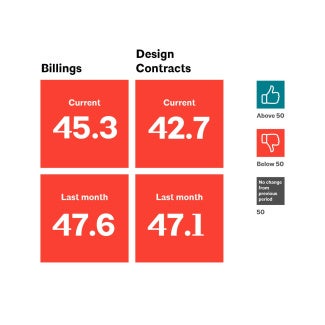The economic loss doctrine: A practical application
The Balfour Beatty case is a Federal Court of Appeals case that ruled to uphold the economic loss doctrine for a design professional.
Economic loss doctrine
One of AIA’s primary purposes and goals is to advocate for the architectural profession. As part of this effort, AIA regularly monitors the legal landscape as it pertains to the practice of architecture, including relevant court cases. As cases proceed through the judicial system, they occasionally reach a state’s highest appellate court or a Federal appellate court. If this occurs, and the circumstances warrant involvement, AIA endeavors to participate in these appellate cases as amicus curiae, which means a “friend of the court.”
One of these cases, Balfour Beatty, Inc. v. Rummel Klepper & Kahl, LLP (the Balfour Beatty case)—the Court of Appeals agreed to hear the appeal in 2016—recently surfaced in Maryland and AIA, on the advice of the Office of the General Counsel and in consultation with the AIA Risk Management Program, participated as amicus curiae to help convince the Maryland Court of Appeals to render a ruling that upholds the economic loss doctrine. For more, see Balfour Beatty Infrastructure, Inc. v. Rummel, Klepper & Kahl, 447 Md. 297, 135 A.3d 416 (2016).
Because engineers had a similar interest to architects in the outcome of this case, the following engineering associations joined AIA in submitting the amicus brief: the American Council of Engineering Companies or Maryland, the American Council of Engineering Companies or Virginia, the American Council of Engineering Companies, the American Society of Civil Engineers, the Maryland Society of Professional Engineers, and the National Society of Professional Engineers.
As noted above, the Balfour Beatty case involves the application of the economic loss doctrine. Most states recognize some version of the economic loss doctrine, although its application has been under increasing scrutiny in many jurisdictions. The economic loss doctrine holds that a party incurring economic losses only (e.g., no physical damages to person or property) cannot recover against another party on the basis of the latter party’s negligence, or other torts, unless the parties are in privity (have a contractual relationship) with one another.
To better understand this in the construction context, consider a standard a design-bid-build project, where the architect and contractor have separate agreements with the owner and no contractual relationship with one another. On such a project, the economic loss doctrine would bar the contractor from suing the architect for delay damages (economic damages) allegedly caused by the architect’s negligent design of the project because the architect and contractor do not have a contractual relationship with one another.
In the Balfour Beatty case, the design professional involved was an engineer under contract with the City of Baltimore to design a wastewater treatment facility. The contractor successfully submitted a proposal based on the design documents the engineer created and subsequently entered into a contract with the City of Baltimore for the construction of the facility. The contractor and the engineer did not have a contract with one another.
Accordingly, the project was a typical design-bid-build project. The construction contract was eventually assigned to Balfour Beatty and, thereafter, Balfour Beatty performed its work in accordance with the design documents. There were, however, a number of flaws and deficiencies in the work that resulted in extensive project delays and additional cost to Balfour Beatty to correct the defects. Balfour Beatty argued that the delays and additional costs (economic damages) were the result of deficiencies in the engineer’s design.
Rather than pursue a claim against the City of Baltimore, the party with whom Balfour Beatty had a contractual relationship, Balfour Beatty filed a claim directly against the engineer alleging that the engineer’s negligence caused Balfour Beatty’s economic damages. The engineer argued that Balfour Beatty could not bring its claim against the engineer because such a claim for economic damages was barred by the economic loss doctrine.
The case worked its way up from the trial level court, which originally dismissed the suit, to Maryland’s intermediate appellate court, The Maryland Court of Special Appeals. The Court of Special Appeals agreed with the engineer that the economic loss doctrine precluded the lawsuit and affirmed the trial court’s dismissal. See generally Balfour Beatty Infrastructure, Inc. v. Rummel, Klepper & Kahl, LLP, 226 Md. App. 420, 130 A.2d 1024 (2016).
Balfour Beatty appealed the case to the highest appellate court in Maryland, The Maryland Court of Appeals. Given the importance of the economic loss doctrine to design professionals, AIA and other amicus curiae became involved.
In support of its appeal, Balfour Beatty argued that the economic loss doctrine does not apply to this case because, in Maryland, the application of the economic loss doctrine it is limited to products liability cases. Balfour Beatty further argued that even though it lacked privity (a contractual relationship) with the engineer, Maryland law would permit its claim for economic damages because its relationship with the engineer was equivalent to a privity relationship. In essence, Balfour Beatty argued that an “intimate nexus” existed between itself and the engineer, which meant that the engineer owed a duty of care to Balfour Beatty and the engineer could therefore be held liable to Balfour Beatty for economic damages caused by the engineer’s breach of that duty of care.
The engineer, with the support of AIA and the other amicus curiae, argued that the economic loss doctrine should apply in this case and that the Maryland Court of Appeals should uphold the lower courts’ decisions. The engineer and amicus curiae argued that the construction industry relies heavily on an intricate web of complex contractual relationships to allocate risk and responsibilities between and among the various project participants. The economic loss doctrine, which bars claims between parties that do not have a contractual relationship, preserves the carefully negotiated allocation of risks and responsibilities because it precludes project participants from seeking damages from parties with whom they have not negotiated a contract.
In so doing, the economic loss doctrine promotes certainty in terms of expected risk exposure among project participants. If the economic loss doctrine were not applied in the construction context, construction industry participants could be exposed to numerous unforeseeable and unexpected claims for economic losses from unexpected sources.
The Court of Appeals ultimately ruled in favor of the engineer and upheld the lower courts’ dismissal of the case. See Balfour Beatty Infrastructure, Inc. v. Rummel, Klepper & Kahl, LLP, No. 24-C-14-000060 (Md. Feb. 21, 2017). Specifically, the Court stated that “we think the complex web of contracts that typically undergirds a public construction project should govern because parties have sufficient opportunity to protect themselves (and anticipate their liability) in negotiating these contracts.” See Balfour Beatty Infrastructure, Inc. v. Rummel, Klepper & Kahl, LLP, No. 24-C-14-000060, slip op. at 25 (Md. Feb. 21, 2017).
In support of its decision, the Court also noted that it was “mindful that government contracts have a special consideration, the public purse. Imposing a tort duty on design professionals will likely correlate with an increase in project costs and with a corresponding rise in price for government entities.” See Balfour Beatty Infrastructure, Inc. v. Rummel, Klepper & Kahl, LLP, No. 24-C-14-000060, slip op. at 26 (Md. Feb. 21, 2017).
This decision is important to design professionals providing services in Maryland because it provides some clarity on the protections offered by the economic loss doctrine in that state. Unfortunately, there is still room for improvement. While the engineer, AIA, and other amicus curiae sought a decision that would hold the economic loss doctrine applicable in all construction projects (private and public), it should be noted that the Court of Appeals specifically limited its holding to the context of public construction projects.
It should also be noted, however, that the Court of Appeals stated that it “found persuasive the logic of states barring negligence claims for purely economic damages against design professionals in complex construction projects absent privity.” See Balfour Beatty Infrastructure, Inc. v. Rummel, Klepper & Kahl, LLP, No. 24-C-14-000060, slip op. at 24 (Md. Feb. 21, 2017).
This language is encouraging as it suggests that under the right factual circumstances, the Court would explicitly expand the application of the economic loss doctrine to all types of construction projects, not just public construction projects. The Court also stated, however, that its opinion does not preclude the possibility that under different circumstances a design professional and a contractor could be found to have a sufficiently intimate nexis to permit a tort based claim for economic damages by a contractor against a design professional.
As such, this issue remains somewhat unsettled in Maryland and AIA will continue to monitor the legal landscape in this regard. When action is warranted, AIA will again participate to advocate on behalf of the architecture profession.
AIA has provided this article for general informational purposes only. The information provided is not legal opinion or legal advice.
This article was contributed by the AIA Risk Management Program. The Risk Management program posts new materials and resources on the first Thursday of every month.



